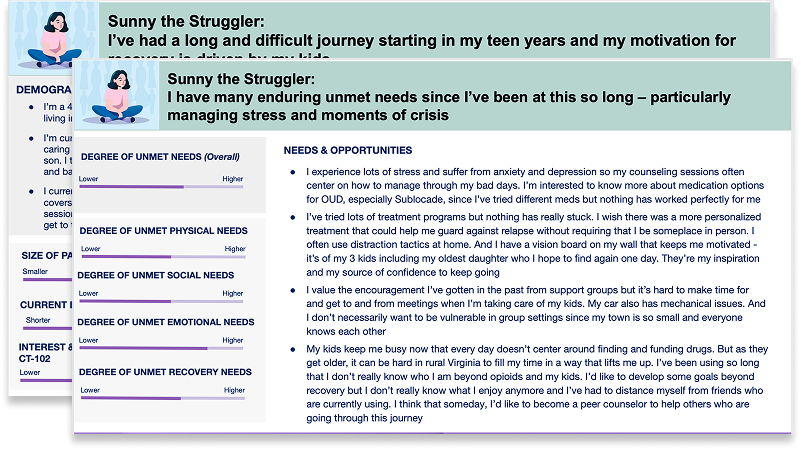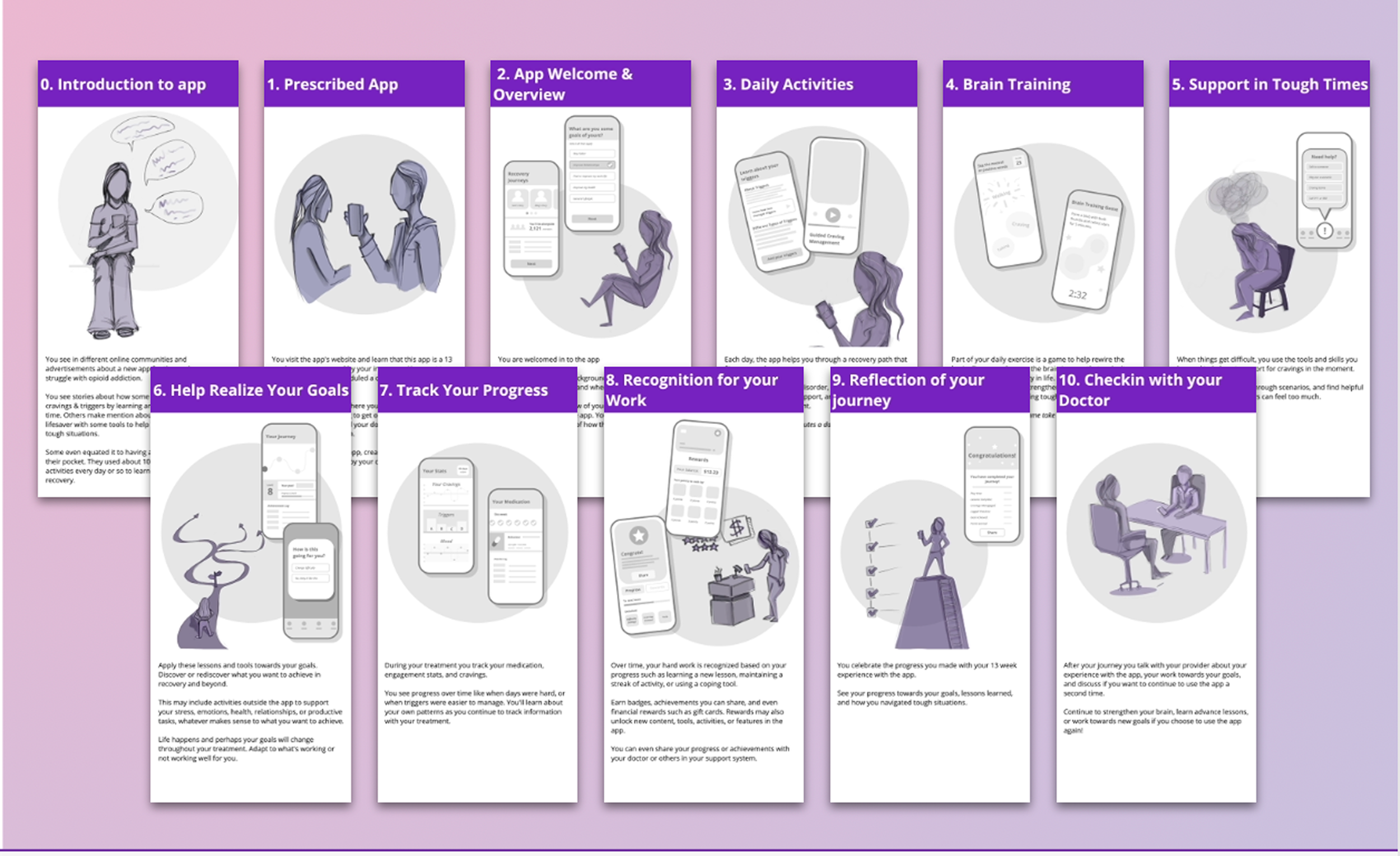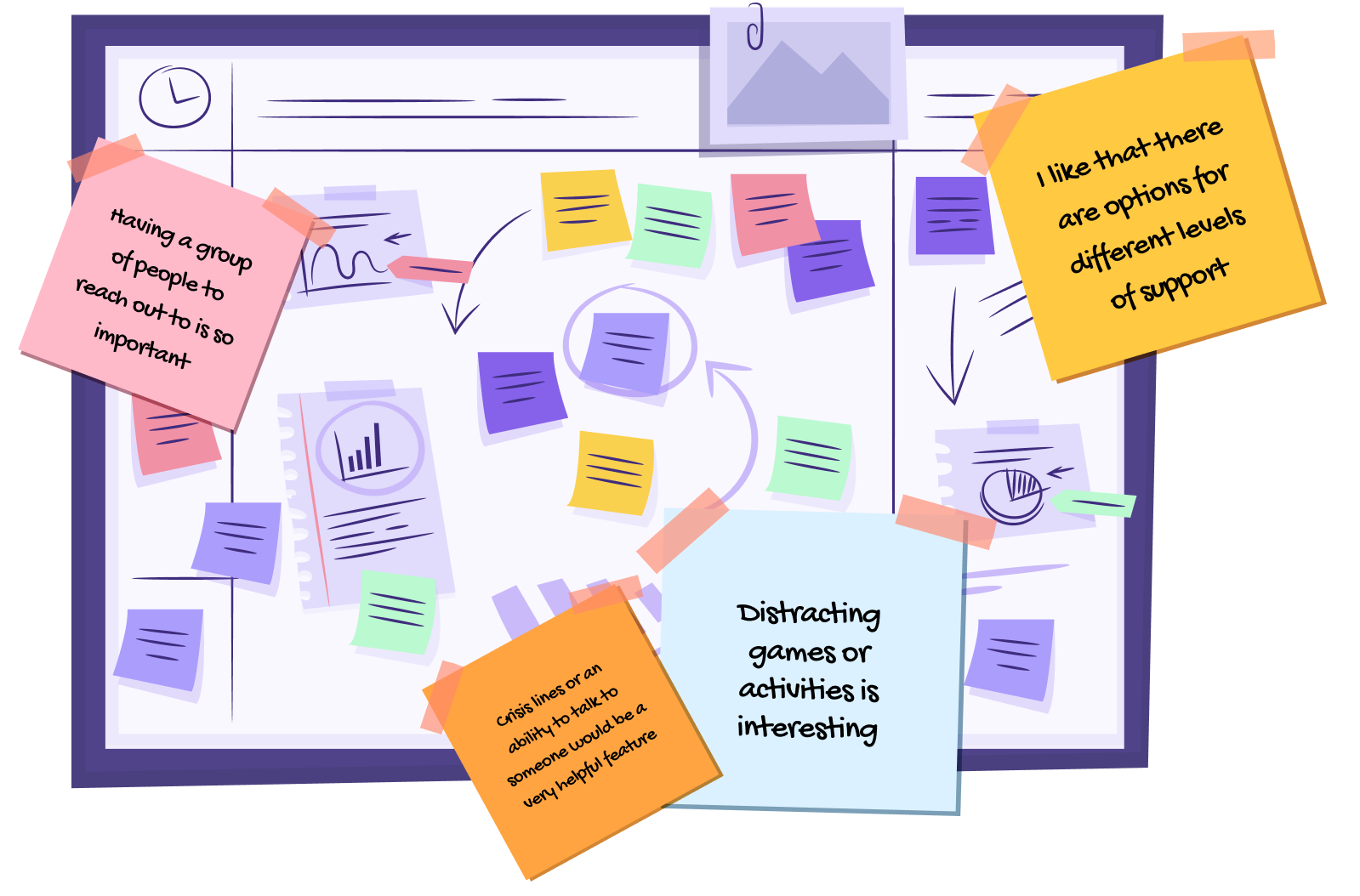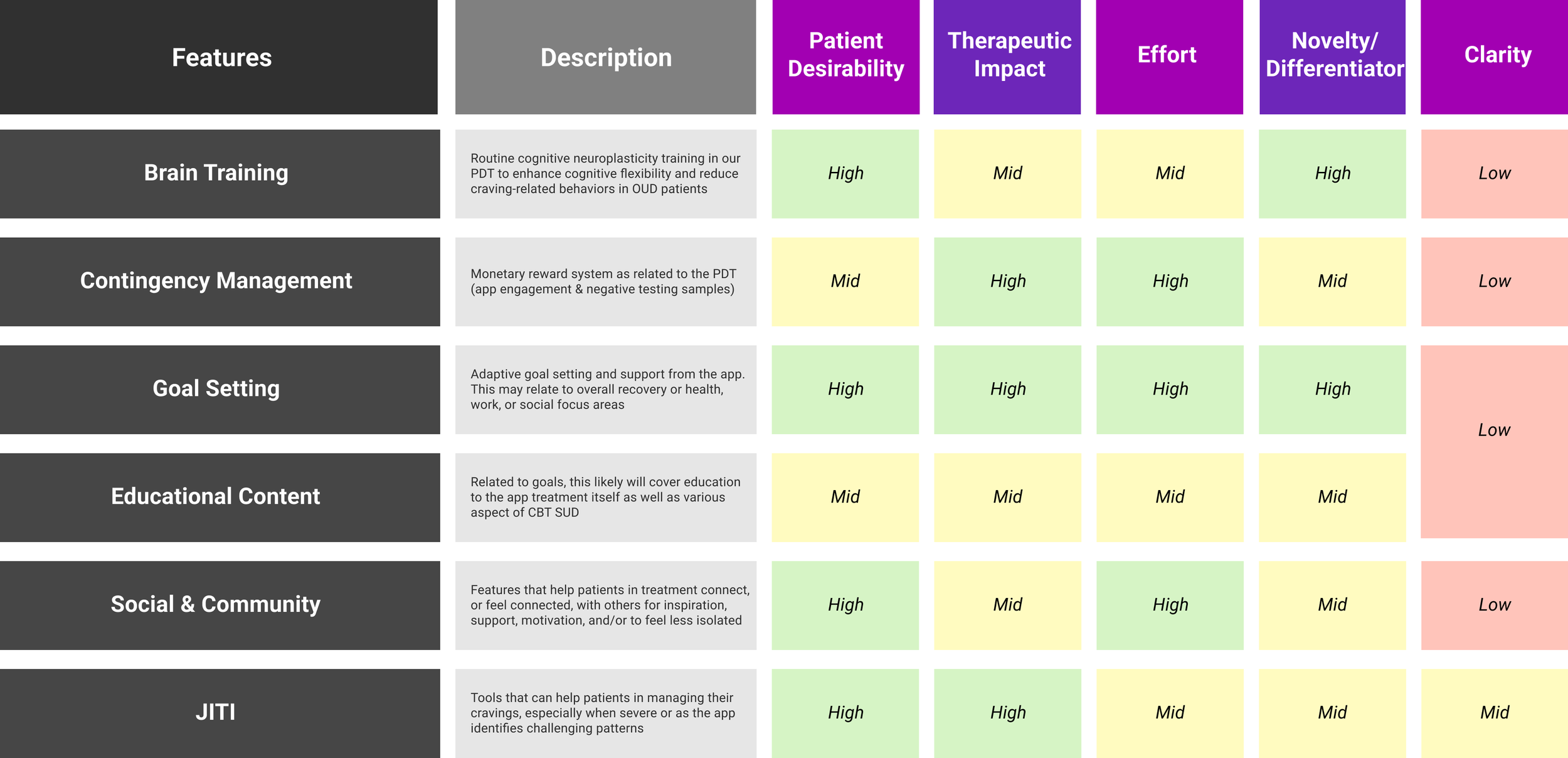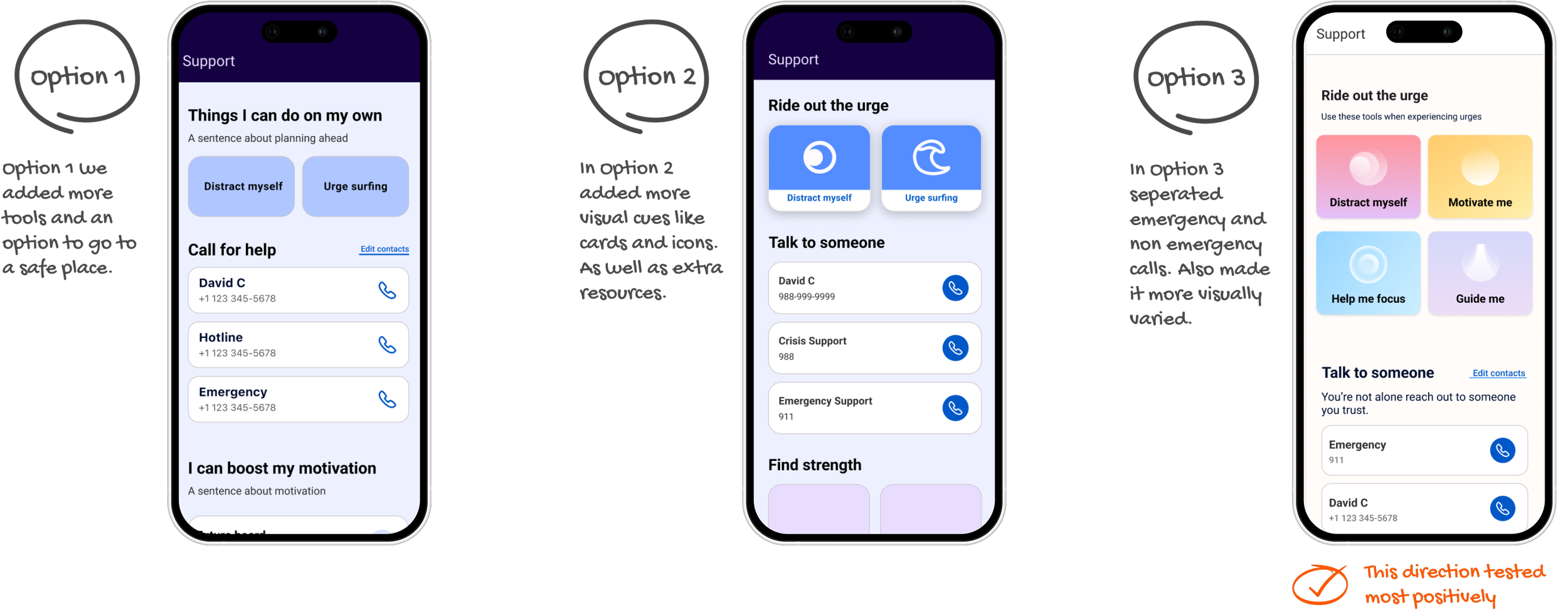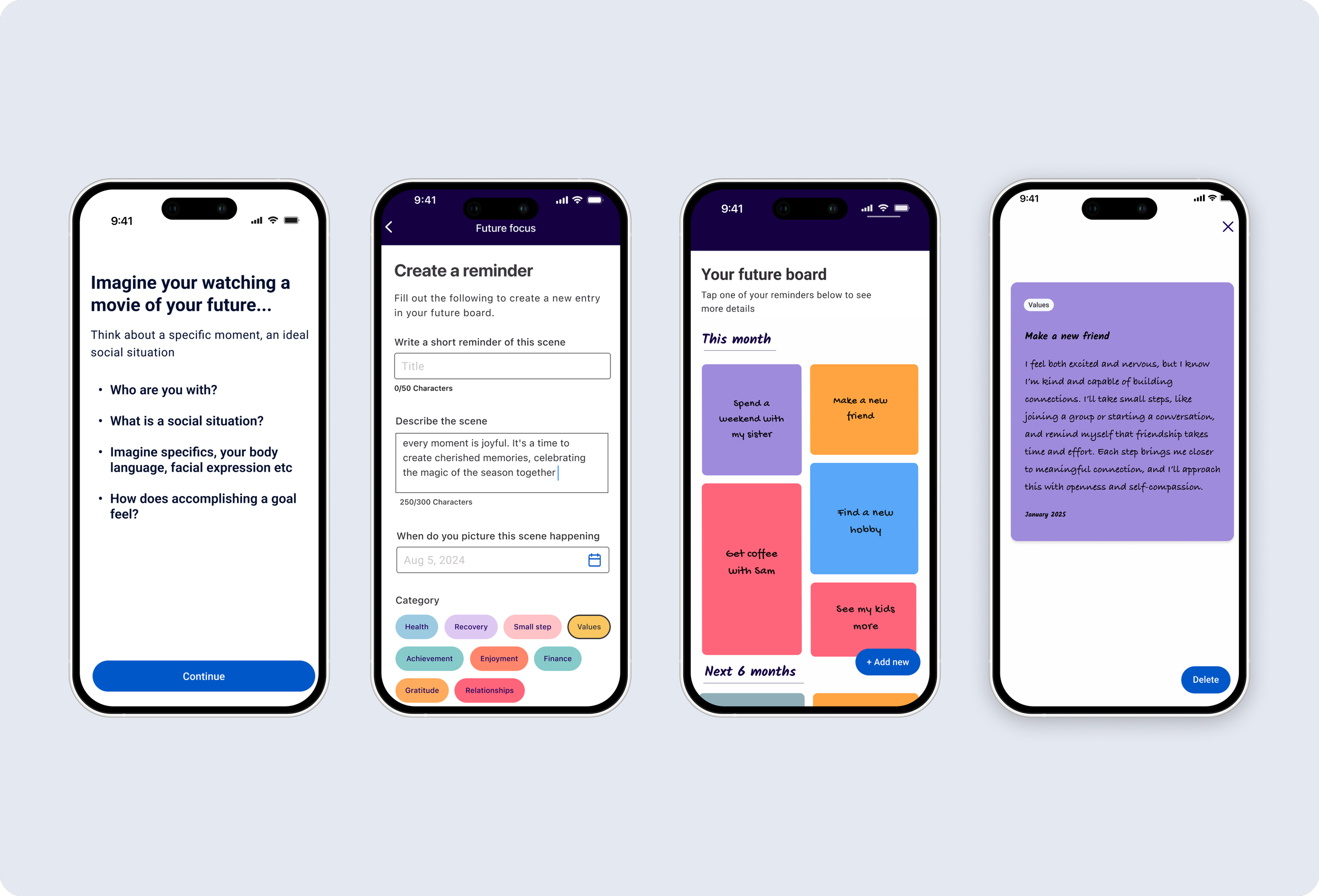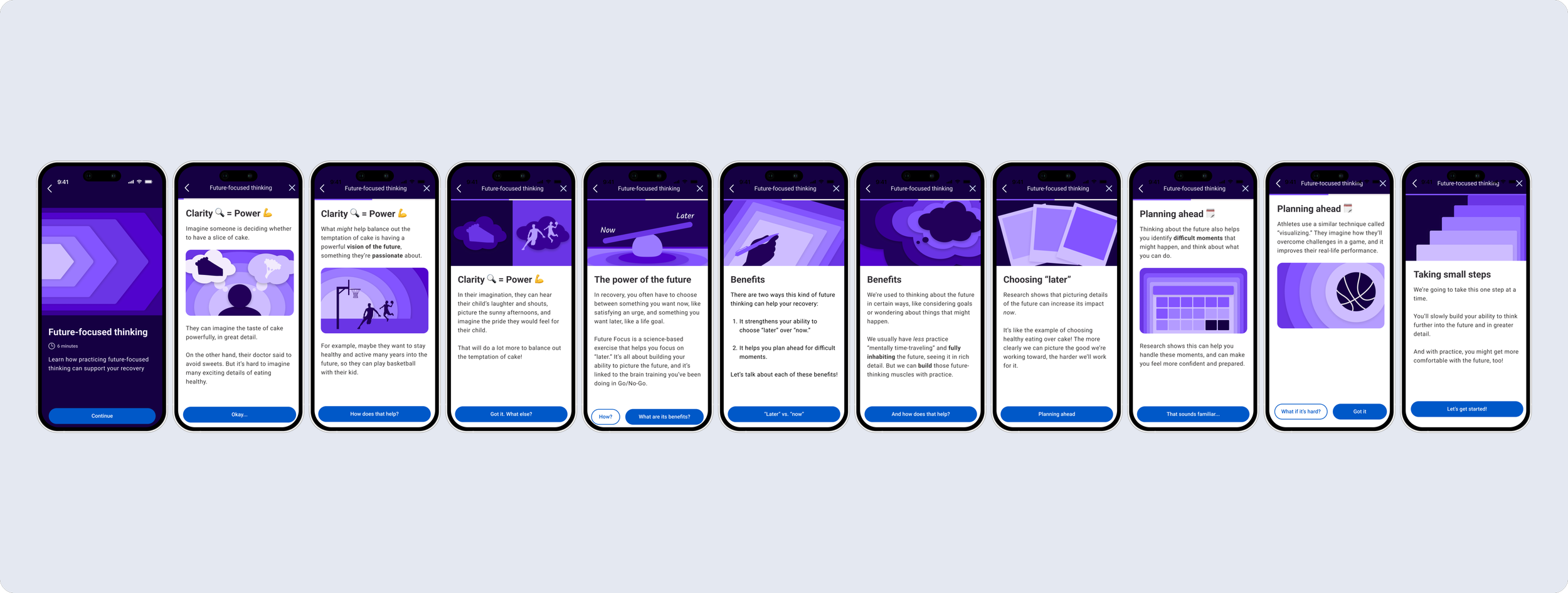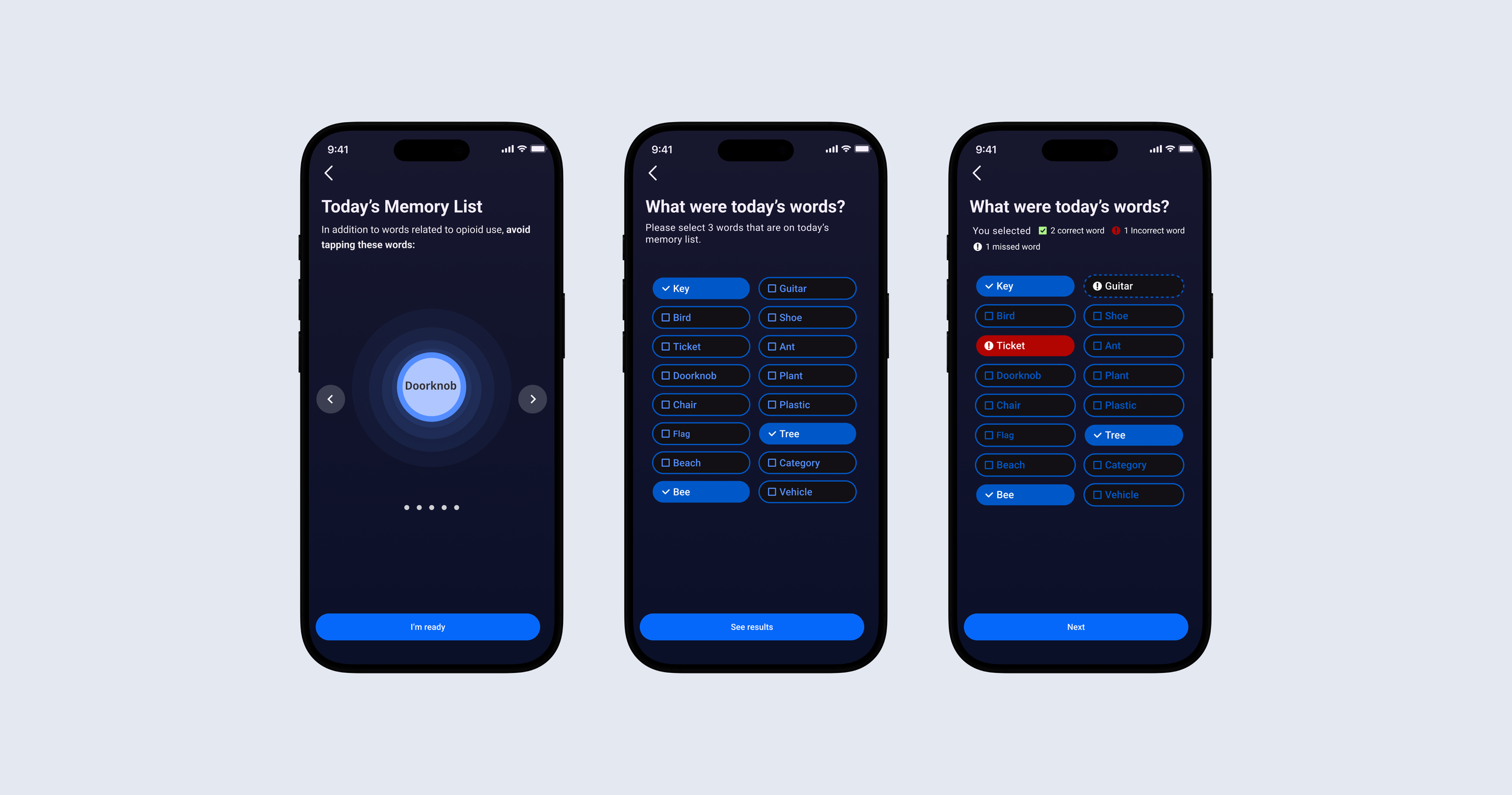Click Therapeutics - Elixir
Designing for behavioral change
Project Background
I worked on the design of a 0-1 digital prescription therapeutic app supporting people in opioid recovery. Collaborated with clinical scientists to define and validate an evidence-based product. We transformed behavioral science into a compassionate experience that improved user engagement and trust.
Covered by insurance and integrated with existing treatment, it provides 24/7 access to personalized lessons, coping tools, and cognitive training. Users can set goals, manage cravings in real time, strengthen focus through daily brain exercises, and earn rewards for progress.
Problem: People in opioid recovery lack ongoing tools to stay focused and motivated between treatment
Timeline: 12 months
Outcomes: 80% of participants said that they would use the app daily.
Role: Senior Product Designer | Duration: 12 months | Team: UX Research, Content Design, Product, Clinicians, Engineers
Exploratory research
We started with exploratory user interviews, talking to people in recovery, their caregivers, and clinicians. The process took around 6 months.
Method: Exploratory user interviews, competitive analysis, literature review, surveys, and diary studies.
Goal: To understand users’ recovery journeys, uncover their lived experiences, and identify unmet needs.
Findings
Through exploratory interviews and surveys, cravings and support consistently emerged as the top unmet needs. Patients described moments of isolation and loss of focus, revealing opportunities for daily motivation, reflection, and self-regulation tools. These insights reinforced users’ strong interest in support-based features.
Based on user interviews, we designed 3 main personas. They captured distinct recovery paths but shared the need for gentle accountability and meaningful daily connection.
Research learnings
Defining opportunities
Research insights shaped an ecosystem of tools addressing cravings, emotional regulation, and motivation. We mapped clinical goals into three core experience pillars: focus, motivation, and support—guiding features like brain training, progress tracking, and support tools.
Patient journey
Drawing on user insights, clinical input, and client priorities, we mapped the recovery journey to highlight emotional highs and lows and pinpoint moments where support was most critical.
Card sorting
UXD and UXR used card sorting to gain a deeper understanding of how users naturally grouped features and what they expected to find under each tab. This approach helped us align the interface more closely with user expectations.
Product development process
The team maintained a close, collaborative process with weekly working sessions across design, product, and science teams. Regular stand-ups and design reviews ensured alignment, rapid iteration, and consistent integration of clinical and user insights into each design decision.
Early concept development and testing
I explored different ways to support focus and motivation through daily, lightweight interactions, testing early sketches and prototypes to understand what felt most intuitive and encouraging to users.
“I like the idea of seeing my future goals; it gives me something to look forward to.”
- Research patient
“Seeing my progress score makes me want to do it again tomorrow.”
- Research patient
Defining the therapeutic framework
Research insights and collaboration with clinical scientists informed a cohesive feature ecosystem prioritized by patient value and clinical feasibility.
Testing & Iteration
Through multiple testing rounds, we refined the experience to improve clarity, reduce friction, and ensure each interaction felt supportive and easy to complete.
Support tab design and iterations
The support tab was a very important and valuable feature for patients, providing them with easy access to assistance and resources whenever they needed help.
Testing & user feedback
User feedback on the Support tab was generally positive; participants found the concept valuable and appreciated having a space dedicated to encouragement and coping tools. However, testing revealed several areas for improvement, including clearer navigation and stronger visual hierarchy to guide focus.
Refining for accessibility and clarity
In this round, we concentrated more on categorizing options for easier scanability
Validating design updates
Based on user feedback, we refined the Support tab to make guidance easier to access and more encouraging to use. The new design emphasizes clarity, emotional tone, and quick access to coping tools, turning a complex layout into a calm, intuitive experience.
“Before, my cravings felt out of control. Now I feel like I have a way to pause and take back a little control when things get hard.”
- Research participant
Design system
We built on an existing design system to ensure consistency across modules while introducing new components tailored to therapeutic use cases. I refined typography, color, and interaction patterns to create a cohesive visual language that felt calm, supportive, and clinically trustworthy.
Final design: From evidence to experience
The final designs brought together user insights, clinical requirements, and behavioral design principles into a cohesive, supportive experience. The interface emphasizes calm visuals, clear hierarchy, and approachable language to help users stay focused and feel guided throughout their recovery journey.
Outcomes & results
User Outcomes
Research validated the product’s potential to deliver meaningful daily support for people in recovery. Participants reported increased self-efficacy, motivation, and emotional stability across multiple feature areas.
Business Outcomes
The work established a strategic and validated foundation for a scalable digital therapeutic, helping secure client buy-in and multi-million dollar Phase 2 funding.
Strategic Outcomes
Research and design efforts resulted in a defined product direction, a prioritized feature ecosystem, and alignment among clinical, patient, and business goals, shaping the clinical roadmap and the next phase of development.






